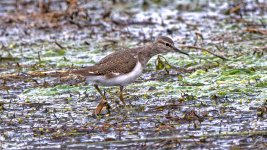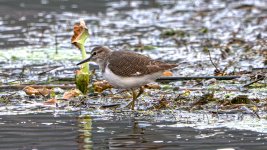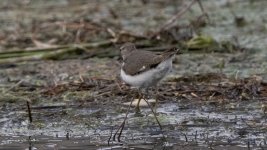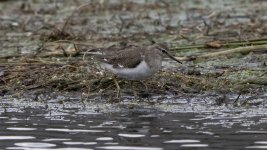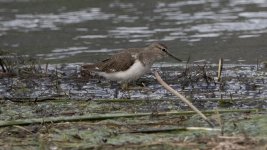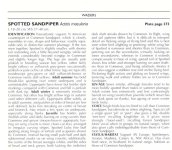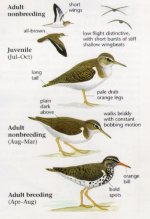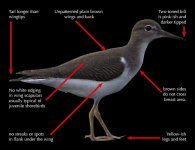-
Welcome to BirdForum, the internet's largest birding community with thousands of members from all over the world. The forums are dedicated to wild birds, birding, binoculars and equipment and all that goes with it.
Please register for an account to take part in the discussions in the forum, post your pictures in the gallery and more.
You are using an out of date browser. It may not display this or other websites correctly.
You should upgrade or use an alternative browser.
You should upgrade or use an alternative browser.
Spotted or Common Sandpiper? (3 Viewers)
- Thread starter Muratfaik
- Start date
More options
Who Replied?Bewick
Connoisseur of WTL

In pictures and my guide, the spotted tends to have a crooked bill with a pale (almost orangish) lower mandible and more yellowish legs while this bird has a straight bill, that's dark throughout and legs that are seemingly the typical green you see on common sands. Also spotted seems more pale compared to the darker common, with a face markings that look more washed. I believe this is a common, also- though this isn't infallible- the spotted is American vagrant to Europe- with only one E-bird record that I can find for Turkey which was in 1988.
I don’t think so… because I took video while the bird Was preening and the short tail was clearly there..Spotted sandpiper has a substantially projecting tail - common sandpiper has an even more substantially projecting tail. So this juvenile has - I guess - lost its tail.
Attachments
Bewick
Connoisseur of WTL

Looks better for spotted sandpiper in the video than in the pics, still think common though for the reasons listed above.I don’t think so… because I took video while the bird Was preening and the short tail was clearly there..
Agree the color criteria but please consider that, the less than ideal lighting conditions. Also it was recorded in 2021 in Göksu Delta:In pictures and my guide, the spotted tends to have a crooked bill with a pale (almost orangish) lower mandible and more yellowish legs while this bird has a straight bill, that's dark throughout and legs that are seemingly the typical green you see on common sands. Also spotted seems more pale compared to the darker common, with a face markings that look more washed. I believe this is a common, also- though this isn't infallible- the spotted is American vagrant to Europe- with only one E-bird record that I can find for Turkey which was in 1988.
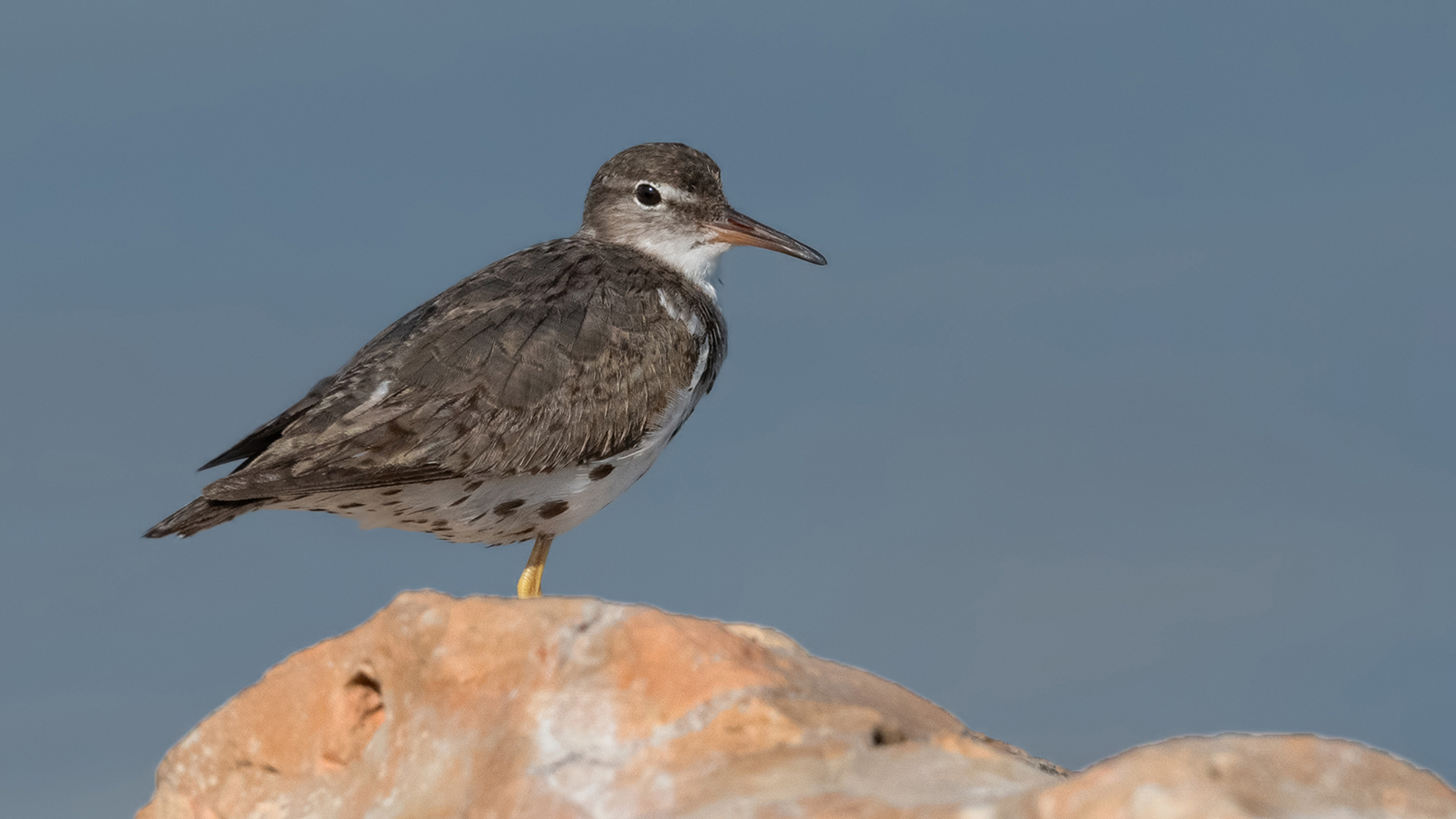
TRAKUS | Fotogaleri | Benekli düdükçün
TRAKUS Göksu Deltası'nda güzel bir tesadüf idi
Bewick
Connoisseur of WTL

That's what I meant by it looks better for spotted in the video then it does in the pictures. Though I the pictures they look more green to me. The images seem better quality, if you mean bright yellow on the pics than I personally disagree. Seems the correct greenish for an immature common sandpiper.Bit difficult without the tail... I'd comment that the legs are actually pretty bright yellow. The neck sides accord better with the description of common's although the Sibley illustration of spotted is much like this
Please note that I edited on photoshop hdr toning and auto color for boosting details.
That's what I meant by it looks better for spotted in the video then it does in the pictures. Though I the pictures they look more green to me. The images seem better quality, if you mean bright yellow on the pics than I personally disagree. Seems the correct greenish for an immature common sandpiper.
Bewick
Connoisseur of WTL

Could you also attach the originals?Please note that I edited on photoshop hdr toning and auto color for boosting details.
I don't know what this means - but I don't think bill-shape is an ID feature.In pictures and my guide, the spotted tends to have a crooked bill
Oh dearI edited on photoshop hdr toning and auto color for boosting details
From the video, there's certainly something odd/missing about the tail (tail missing, tail-coverts present??) - because this bird's 'tail' isn't normal for either spotted sandpiper or common sandpiper - and thus, tail-wise, it's no more likely to be spotted sandpiper than it is to be common sandpiper. As a juvenile, it won't (I guess) be moulting its tail.
Andy Adcock
Worst person on Birdforum

Thought it was the other way around, short tail?Spotted sandpiper has a substantially projecting tail - common sandpiper has an even more substantially projecting tail. So this juvenile has - I guess - lost its tail.
I think that Spotted, have brighter legs than Common?
Bewick
Connoisseur of WTL

Looks better for common in these pictures.
Bewick
Connoisseur of WTL

It’s not just leg colour, pretty much what I mentioned in the first post.As seen on the guidebook, legg color is not the concrete criteria…View attachment 1530519
Ahh the Photoshopping had a big effect. Legs greenish for me now, more like Common. Given location, unless there's a compelling reason why not, I'd say "common". [Actually, I think we can see something of the tertials now too. They are not plain as they should be for Spotted I believe]
The problem is; there are different illustrations and details for the american vagrant Such that according to owned guidebook anyone can judge this species differently. I can see two toned bill, slightly longer tail (tail projection), drab orange legs and especially bolder rear supercilium (a feature that said for spotted sp) on my pictures. That is why I guess instead of judging from book or internet, an observer who saw two species on the field is needed.It’s not just leg colour, pretty much what I mentioned in the first post.
Attachments
Similar threads
- Replies
- 6
- Views
- 732
Users who are viewing this thread
Total: 4 (members: 0, guests: 4)




